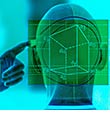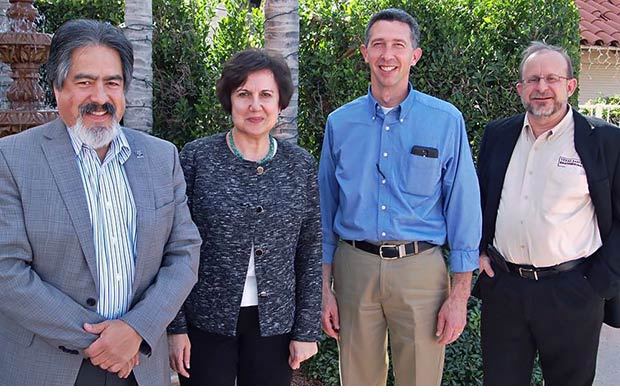College helping to add creativity, entrepreneurship to engineering curriculum in NSF-funded project

Learn more about innovation and entrepreneurship taught in The Design Process .
Undergraduate engineering education at Texas A&M will soon reflect an added emphasis on innovation and entrepreneurship from contributions by two experts in these areas from the College of Architecture.
Jorge Vanegas, dean of the college, and Rodney Hill, professor of architecture, along with faculty and administrators in the Dwight Look College of Engineering and Mays Business School, are designing and implementing unique, high-impact learning experiences for student engineers aspiring to be leaders and innovators.
The effort is part of the inaugural [Pathways to Innovation] (http://epicenter.stanford.edu/page/pathways-to-innovation) , a National Science Foundation-funded initiative led by [Epicenter] (http://epicenter.stanford.edu/page/about) , an arm of the NSF that partners with leaders in academia and government to enhance engineering education.
Epicenter’s leaders believe that in addition to technical and analytical expertise, engineers need to be flexible, resilient, creative, empathetic and have the ability to recognize and seize opportunities.
“All of these skills,” they added, “can and should be taught to engineers as part of their formal education.”
These skills are exactly what Vanegas and Hill have been teaching students for years in [The Design Process] (http://archcomm.arch.tamu.edu/archive/news/fall2009/stories/Rodney_design.html) , one of Texas A&M’s most popular classes, which has a lengthy track record of seeing students produce patentable inventions.
The class, open to all majors since 2003, is a creativity workshop in which Vanegas and Hill lead students to spark, explore, discover and develop their creative problem-solving abilities and entrepreneurial spirit, both individually and in multidisciplinary teams.
Concepts hatched in the class are often recognized in national and campus design competitions, such as an [umbrella] (http://one.arch.tamu.edu/news/2011/11/21/solar-umbrella/) with solar panels that powers electronic devices, an exercise wheel one can use at work, a [kiosk] (https://one.arch.tamu.edu/news/2010/11/17/design-process-student-captures-10000-prize-tax-kiosk-concept/) where one can file a tax return, [gloves] (http://archcomm.arch.tamu.edu/archive/news/fall2009/stories/ideas_winner.html) that generate heat from a user’s movement, a [sensor system] (http://archcomm.arch.tamu.edu/archive/news/fall2009/stories/ideas_winner.html) that prevents cyclists from riding without a helmet and many more.
Vanegas, Hill and collaborators have already made significant progress in the Pathways project.
They joined Pathways counterparts from other universities during a Feb. 26-28, 2014 workshop in Phoenix where they identified opportunities for immediate Pathways implementation using existing programs and resources with high potential impact among engineering students.
They’ve also completed an extensive inventory of all relevant curricular and extracurricular programs and available space across campus to use as a foundational tool for setting Pathways goals and priorities.
Participation in the program is also providing Texas A&M access to resources, networks and ongoing coaching and advice from national leaders in engineering and technology innovation and entrepreneurship.
“The Pathways to Innovation program aligns well with our efforts to transform engineering education by providing students with opportunities to develop innovative ideas, test them with prototypes, and further improve them to become solutions for problems in our society,” said Katherine Banks, vice chancellor for engineering for the Texas A&M University System and dean of the Dwight Look College of Engineering.
For more information about Pathways to Innovation, contact Magda Lagoudas, director of engineering academic and student affairs, at m-lagoudas@tamu.edu or 979-845-7200.
Tags
Related Posts
New director shares vision for Institute for Applied Creativity

Vanegas, Warden earn Regan Prize
Ph.D. student’s team pitches idea on national TV show
Tabb co-authors book analyzing ‘green’ design

13 outstanding alums share how college aided their success
Follow Us
Facebook Twitter Vimeo Youtube Flickr RSS
Recent Posts

Planning prof heads study of disaster housing aid

A message from the dean

Former student remembered as expert planner

Leading educator named new head of Architecture Dept.





_thumbnail_small.png)
